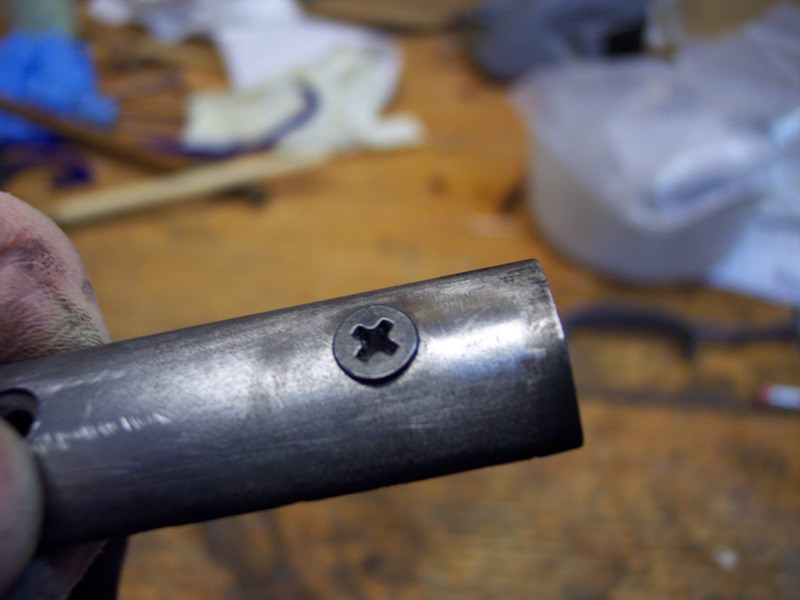I struggle with getting my screw hole perfectly centered through a countersunk hole in a butt plate. Sometimes I hit it perfectly but most of the time I am a little askew with a slightly tilted screw head. I always start over, plug the hole and make another attempt. I have used gimlets, hand drills, power drills and can still get the screw hole slightly off. Of course I can file the screw head to make it look perfectly centered but I would rather have the hole centered in the first place.
Anybody make a drilling jig to make a pilot hole for the screw?
Of course it sounds like a nutty idea but I am thinking about drilling a perfectly centered hole through a countersunk screw head and partially cut off shank, hot melting the screw head perfectly aligned in the countersink and drilling my pilot hole through it. Sometimes my nutty ideas actually work, we will see on this one.
I am working on Kibler kit and have one of the buttplate return holes drilled perfectly and am on my 4th plugging and redrilling of the other one.
Anybody make a drilling jig to make a pilot hole for the screw?
Of course it sounds like a nutty idea but I am thinking about drilling a perfectly centered hole through a countersunk screw head and partially cut off shank, hot melting the screw head perfectly aligned in the countersink and drilling my pilot hole through it. Sometimes my nutty ideas actually work, we will see on this one.
I am working on Kibler kit and have one of the buttplate return holes drilled perfectly and am on my 4th plugging and redrilling of the other one.








